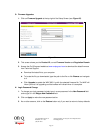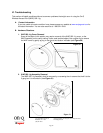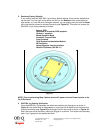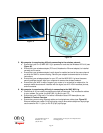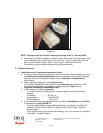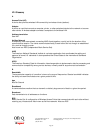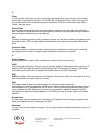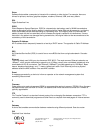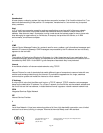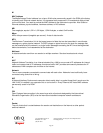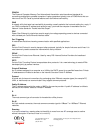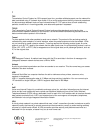
Page 32
301 Fulling Mill Road, Suite G ©Copyright 2005 by On-Q/Legrand, Inc All Rights Reserved.
Middletown, PA 17057 www.onqlegrand.com
(800)-321-2343
T
TCP
Transmission Control Protocol on OSI transport layer four, provides reliable transport over the network for
data transmitted using IP (network layer three). It is an end-to-end protocol defining rules and procedures
for data exchange between hosts on top of connectionless IP. TCP uses a timer to track outstanding
packets, checks error in incoming packets, and retransmits packets if requested.
TCP/IP
The Transmission Control Protocol/Internet Protocol suite provides standards and rules for data
communication between networks on the Internet. It is the worldwide Internetworking standard and the
basic communications protocol of the Internet.
Tunnel
To place packets inside other packets to send over a network. The protocol of the enclosing packet is
understood by each endpoint, or tunnel interface, where the packet enters and exits the network. VPNs
rely on tunneling to create a secure network. Tunneling requires the following protocol types: A carrier
protocol, such as TCP, used by the network that the data travels over; An encapsulating protocol, such as
IPSec, L2F, L2TP, or PPTP, that is wrapped around the original data; and A passenger protocol, such as
IP, for the original data
U
UDP
User Datagram Protocol. A method used along with the IP to send data in the form of message units
(datagram) between network devices over a LAN or WAN.
Unicast
A point-to-point data transmission sent from one sender to one receiver. This the normal way you access
websites. See also multicast.
USB
Universal Serial Bus is a computer interface for add-on devices such as printers, scanners, mice,
modems, or keyboards.
USB 1.1 supports data transfer rates of 12 Mbps and plug-and-play installation. You can connect up to
127 devices to a single USB port. USB 2.0 supports data rates of 480 Mbps.
V
VoIP
Voice over Internet Protocol is a method to exchange voice, fax, and other information over the Internet.
Voice and fax have traditionally been carried over traditional telephone lines of the Public Switched
Telephone Network (PSTN) using a dedicated circuit for each line. VoIP enables calls to travel as discrete
data packets on shared lines. VoIP is an important part of the convergence of computers, telephones,
and television into a single integrated information network.
VPN
A virtual private network is a private network that uses “virtual” connections (tunnels) routed over a public
network (usually the Internet) to provide a secure and fast connection; usually to users working remotely
at home or in small branch offices. A VPN connection provides security and performance similar to a
dedicated link (for example, a leased line), but at much lower cost.




